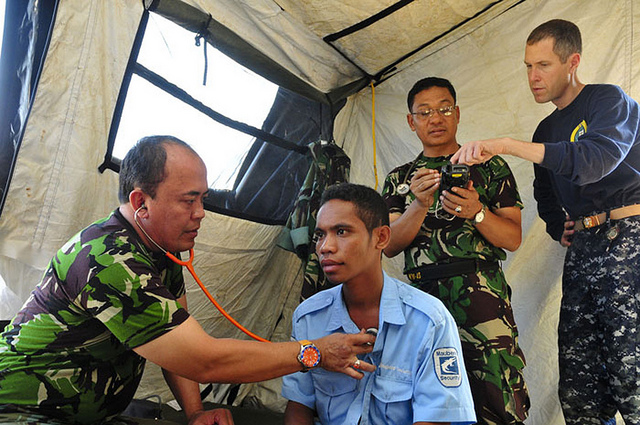 In my last post, I argued that critics of Indonesian military (TNI) reform are taking too narrow a view of its progress. For most critics, the primary yardstick for measuring the success of TNI’s reform agenda has been a 2004 law, which laid out a roadmap and a timetable for recasting the military in line with modern liberal democratic norms. This is considered by many the ‘be all and end all’ metric for TNI reform.
In my last post, I argued that critics of Indonesian military (TNI) reform are taking too narrow a view of its progress. For most critics, the primary yardstick for measuring the success of TNI’s reform agenda has been a 2004 law, which laid out a roadmap and a timetable for recasting the military in line with modern liberal democratic norms. This is considered by many the ‘be all and end all’ metric for TNI reform.
All organisms, physical or organisational, continuously evolve. For example, our own defence force is currently engaged in organisational renewal and is undergoing cultural change. Even if TNI reform has inched forward by some standards, the wider process of post-New Order professionalisation has been progressing apace for 15 years. TNI modernisation and professionalism have been advanced with every TNI unit assigned to UN peacekeeping duties, with every officer trained at overseas staff colleges and with every training exercise involving modern armed forces. To discount this, or to view TNI reform exclusively through a blueprint laid down in 2004, demeans the impressive strides made by the Indonesian people and their body politic throughout the Reformasi era. TNI has largely kept pace with political transformation.
All armed forces are, to a greater or lesser degree, reflections of their wider societies. Just as Indonesia has undergone fundamental change, so too has its military establishment. Assessing TNI reform as if trapped in a time capsule, without considering the shaping and influencing effects of wider societal and organisational developments, misses a fundamental factor in the equation.
In broad terms, we might consider three approaches to evaluating the process of internal reform by TNI since the fall of Suharto. The first is a comparison of TNI with other professional armies around the world. The second is a comparison of TNI today with its Suharto-era predecessor, the Angkatan Bersenjata Republik Indonesia (ABRI). A third approach is to benchmark military reform against the reforms achieved by other organs of Indonesia’s democracy, such as political reform, law and justice sector reform and economic reform.
Though by no means perfect, TNI measures up demonstrably well, by any reasonable standards, against the armies of the world’s most advanced democracies, against its New Order incarnation, ABRI, and also relative to other arms of Indonesian government. For example, TNI performed well compared to other Indonesian government organisations in terms of complaints received in 2010 by Indonesia’s National Human Rights Commission.
To be fair, TNI isn’t the only military force in which rogue elements, in isolated cases, abuse the human rights of civilians in the field. And fault lies not just with under-trained and poorly-led armed forces like the atrocious Bulgarian battalion in early 1990s Cambodia. One only has to recall scandals involving Italian and Belgian units in Somalia, along with abuses in the same UN operation which led to the disbanding of Canada’s elite Airborne Regiment.
In more recent times, the random murder and mutilation of Afghan civilians by self-appointed ‘death squads’ of the US 5th Stryker Combat Brigade, along with images of US Marines urinating on Taliban corpses, are stark and offensive reminders that all conflict can potentially bring out the worst in those waging it. There is absolutely no excuse when unaccountable power is employed malevolently against the helpless. But it happens, and overwhelmingly without official sanction. In the case of TNI, the incidence of such acts is becoming rarer.
The interrogation and torture of two suspected Papuan separatists with a knife and burning stick by TNI elements in 2010 was egregious and rightly drew international condemnation, along with an undertaking by the Indonesian President to bring the perpetrators to justice. But compared to the dozens of civilians killed in a Dili cemetery 20 years before, orchestrated by ABRI forces in East Timor, TNI respect for human rights is unarguably trending in the right direction.
This is rarely recognised by some critics of TNI reform, whose comments invariably focus on the milestones ahead, while failing to credit the path already travelled. So, how has TNI reform fared over the last 15 years? Compared to what? Compared to a range of benchmarks—it has done better than many critics maintain.
Gary Hogan is a former Professor of Grand Strategy at the US National Defense University. He was the first foreigner to graduate from Indonesia’s Institute of National Governance (Lemhannas) and was Australia’s Defence Attaché to Indonesia 2009 to 2012. Image by Flickr user Commander, U.S. 7th fleet.

